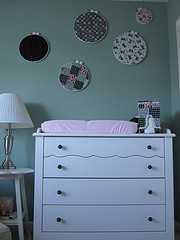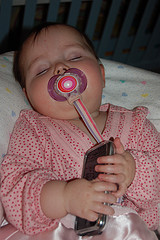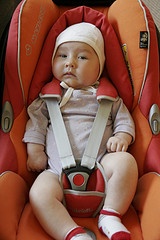It’s not unusual to get more than is bargained for when buying baby furniture sets. Most furniture store or stores, particularly for children’s furniture, are usually a good place to find a well-priced set. When most persons think about a set, they’re likely to picture a pair. In the case of baby furniture, however, most sets come with three or more pieces. Most collections include at least 5 pieces of baby furniture even though other pieces aren’t considered part of the set.
The most common pieces included in baby furniture sets are a crib and a dresser. Normally, both will be very beautiful, with most sets being wood construction. If preferred, it may be likely to find a metal crib with a wooden dresser.

flickr.com/magpie372
Bigger sets will most likely include a changing table with the dresser and crib. These sets normally cost a bit more, but they actually represent significant savings. A nightstand or an armoire may be included in larger sets. The more pieces a set includes, the more it’s going to cost but in reality, the set itself may be more valuable than the increase in price suggests.
For those on a budget, a two or three piece set would be the best alternative. It is also crucial to consider the available space. If the nursery doesn’t have a bigger space, a lot of bulky furniture simply isn’t going to work. Furthermore, it is essential to consider how the furniture being considered will look within the room. If the size, shape, or style will clash or look out of place the set would be an unsuitable choice.
Affordability is a crucial aspect when it comes to baby furniture sets. Don’t forget that it could prove to be a good investment since many people use dressers and armoires throughout their adolescent and teen years. In this way, purchasing a set could end up saving money in the end. Consider whether or not keeping pieces of the set for years will be worthwhile and budget wise accordingly.
Discounts are normal when purchasing furniture sets. If the furniture is good quality, additional savings in the form of years of usage may enhance what could be a meager initial discount.

